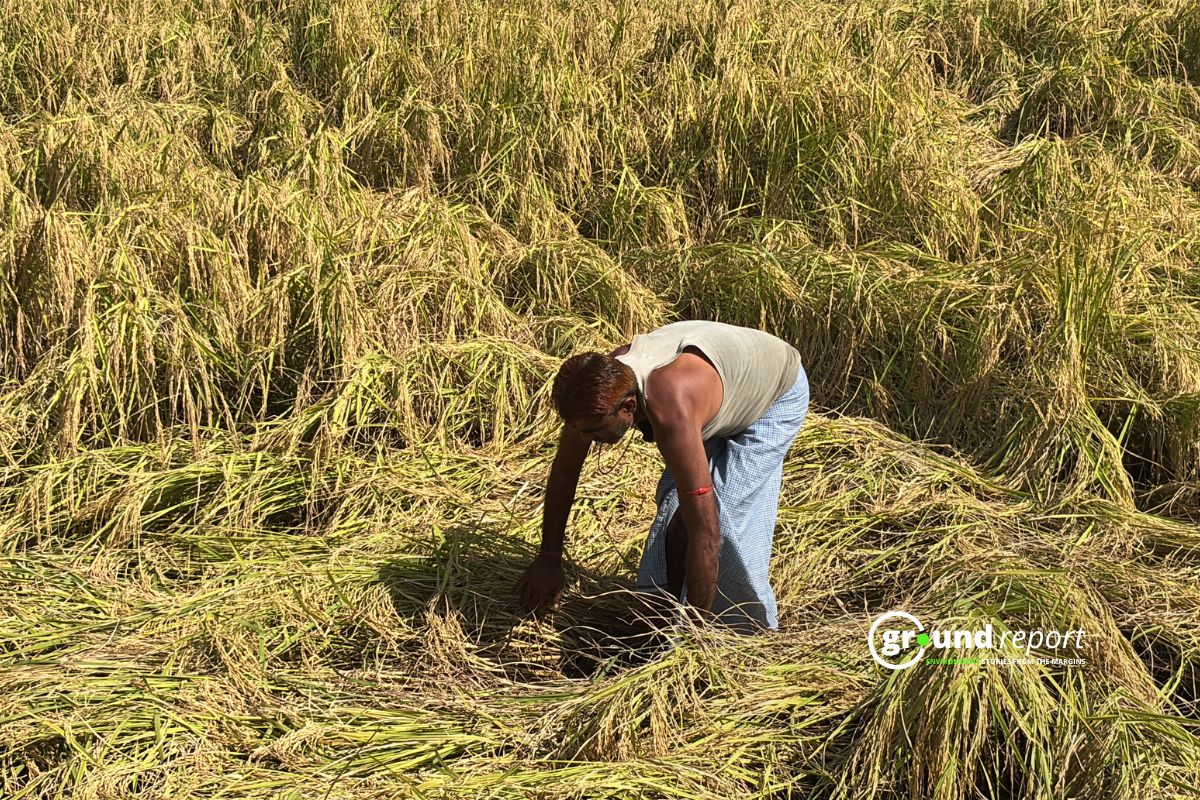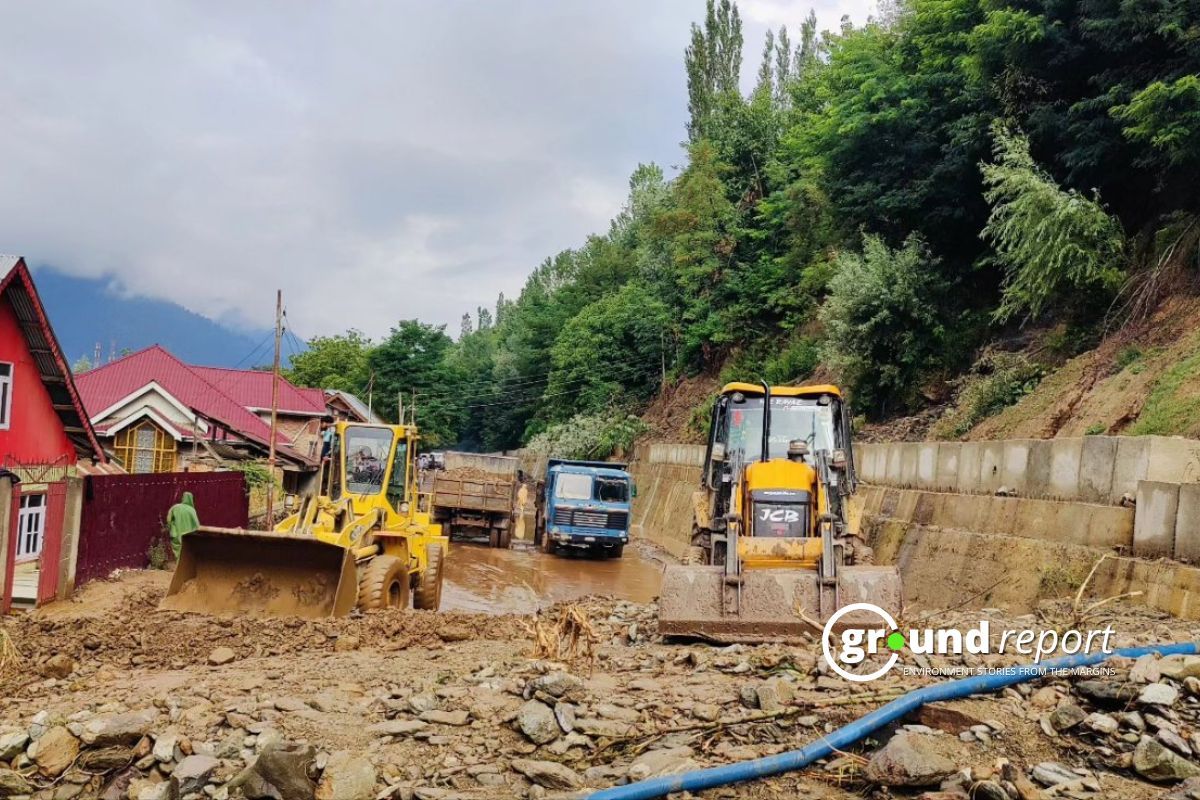Extreme weather events have become increasingly frequent in Madhya Pradesh, making it one of India’s most disaster-prone states. In 2024, the state faced devastating losses, including 373 fatalities, damage to over 8,147 homes, and the destruction of over 25,000 hectares of crops due to hydro-meteorological disasters—natural hazards driven by water and weather-related phenomena. These events, fueled by extreme atmospheric and hydrological processes worsened by climate change, highlight the urgent need for action.
Dr. Praveen Kumar, a scientist at the Regional Meteorological Centre, explains,
“Madhya Pradesh’s climatic conditions are significantly shaped by its geographical features. Although primarily a plain region, the state’s extensive north-south stretch exposes it to diverse weather systems.” These geographical factors make Madhya Pradesh especially susceptible to climate change, resulting in frequent and severe weather disruptions.
This trend raises a few critical questions– Is the human toll from natural disasters in Madhya Pradesh increasing, or have preparedness and resilience measures improved?

What data says?
Over the past five years, Madhya Pradesh has steadily risen in hydro-meteorological disaster-related fatalities. Between 2018 and 2024, the state averaged 266 deaths yearly from disasters like tropical cyclones, heavy rainfall, severe thunderstorms, floods and drought.
-
In 2024, Madhya Pradesh reported 353 deaths due to extreme weather events. Over 25,170 hectares of agricultural land were damaged, 7,278 houses destroyed, and 61 animals lost.
-
In 2023, the state saw 253 fatalities, with 45,000 hectares of crops affected, 2,626 houses damaged, and 376 animal deaths.
-
In 2022, there were 301 deaths, 6,646 homes impacted, and 997 livestock deaths due to similar extreme weather events.
-
In 2021: The death toll fell to 191, but significant flooding caused extensive damage to homes and agricultural infrastructure.
-
In 2020: during the COVID-19 lockdown, Madhya Pradesh recorded 89 deaths due to extreme weather events
-
In 2019: Madhya Pradesh witnessed 674 deaths, 1,888 animal fatalities, and Rs 12,000 crore in damages due to heavy rains and floods. Over 1.18 lakh buildings were damaged, and 60.47 lakh hectares of farmland affected.
These figures underscore the harsh reality that Madhya Pradesh endures over 300 disaster-related deaths annually, coupled with extensive damage to homes and agricultural land, reaffirming its vulnerability to the impacts of climate change.
Extreme weather rise
Madhya Pradesh is prone to floods, droughts, and heat waves. Recently, it faced extreme weather more frequently, significantly impacting lives and the economy.
According to recent climate reports, Madhya Pradesh faces extreme weather events more frequently than any other Indian state, with regular occurrences of heatwaves, heavy rainfall, and droughts that severely affect agriculture and livelihoods.
Dr. Kumar further explains,
“Over the past 10-15 years, the frequency of extreme weather events in Madhya Pradesh has risen considerably. While climate variability is a natural phenomenon, the state has witnessed an increase in intense events such as floods, lightning, and cyclonic activity. The southward shift of the monsoon trough has intensified rainfall, leading to more extreme downpours than in the past.”
These changing weather patterns amplify the risks of climate change, severely impacting agriculture and livelihoods across the state.
These figures underscore the harsh reality that Madhya Pradesh endures over 300 disaster-related deaths annually, coupled with extensive damage to homes and agricultural land, reaffirming its vulnerability to the impacts of climate change.
A study by the State Climate Change Knowledge Management Centre warns that Madhya Pradesh, prone to droughts and floods, faces increasing frequency and intensity of extreme weather events due to climate change. Rising temperatures over the next 50 years are expected to worsen its vulnerability.
Dr. Kumar sheds light on how Madhya Pradesh’s weather systems contribute to its climatic patterns,
“In winter, the northern parts of the state are influenced by cold winds from the Himalayas, particularly in the northwest. These winds bring light rainfall and can trigger cold waves when Western Disturbances (WDs) pass through. During the monsoon, the state is affected by the southward shift of the monsoon trough, which causes heavy rains. Moisture from the Arabian Sea further intensifies these systems, leading to even higher rainfall. In summer, the state’s proximity to the tropics shapes its weather, with hot winds and thunderstorms, especially during the pre-monsoon months of March, April, and May.”
These factors, combined with the broader impacts of climate change, make Madhya Pradesh increasingly vulnerable to extreme weather events.
Taking a proactive approach, Madhya Pradesh has made an Action Plan on Climate Change (SAPCC), focusing on adapting to the growing risks of climate disasters. It acknowledges the challenges posed by agriculture and forestry, which are deeply vulnerable to changing weather patterns.
The study emphasizes that extreme weather events in Madhya Pradesh severely damage homes and agriculture while exacerbating public health issues. Flooding creates breeding grounds for mosquitoes, driving the spread of vector-borne diseases like malaria and dengue. Additionally, the increasing frequency of heatwaves places significant strain on the healthcare system, particularly in rural areas with limited medical infrastructure.
Climate change has profoundly altered Madhya Pradesh’s landscape, intensifying hydrometeorological disasters. Research indicates that the climate crisis is a key driver of increased weather variability, manifesting as erratic rainfall, prolonged droughts, and severe flooding.
Dr. Divya E. Surendran, scientist at the India Meteorological Department (IMD), Bhopal, explains,
“Temperatures are rising globally, and Madhya Pradesh is no exception. Over the last 10 to 15 years, we’ve observed rising temperatures affecting atmospheric moisture levels, leading to more frequent and intense extreme weather events, including heavy rainfall and heatwaves.”
She adds, “Moderate rain events have decreased, but heavy rainfall is rising. This trend aligns with global warming and climate change impacts.”
The State of Extreme Weather 2024 report by the Centre for Science and Environment (CSE) underscores the increasing frequency and severity of extreme weather events driven by climate change. Madhya Pradesh experienced 176 days of extreme weather in 2024, nearly double the national average of approximately 90 days.
IMD reports highlight that rising temperatures are fuelling erratic weather patterns across India, with Madhya Pradesh becoming a hotspot for such events.
Such figures indicate a changing climate; they also reflect human displacement and suffering, with countless families bearing the brunt of these emergencies.

Disaster management framework
In response to increasing disasters, the state has implemented several policies aimed at improving disaster preparedness and response. The Madhya Pradesh State Disaster Management Policy (MPSDMP), established in 2002, aims to address natural disasters through a multi-hazard approach integrated into development planning. The policy stresses effective resource utilization at all disaster management stages—pre-disaster preparation, immediate response, and post-disaster recovery.
A senior official from the MPSDMA highlights ongoing efforts to improve disaster preparedness, stating,
“We are working diligently to strengthen disaster preparedness, focusing on better early warning systems, infrastructure improvements, and local capacity-building.”
However, the frequency and severity of disasters have often exceeded the state’s response capacity, emphasizing the urgent need for both immediate action and long-term strategic planning.
Experts agree that extreme weather challenges in Madhya Pradesh have escalated due to climate change. Addressing these impacts requires enhanced infrastructure, advanced early warning systems, and active community participation to mitigate disaster risks effectively.
Disaster funding yearly overview
Between 2018 and 2024, Madhya Pradesh received ₹6,489 crore from the National Disaster Response Fund (NDRF) for relief and reconstruction. For 2021-2024, the state was allocated ₹13,693 crore from the National Disaster Mitigation Fund (NDMF) and ₹32,031 crore from the State Disaster Mitigation Fund (SDMF) under the 2021-2026 framework, aimed at mitigating disaster impacts and enhancing resilience.
Funding is disbursed through two mechanisms: the State Disaster Response Fund (SDRF) and the centrally funded National Disaster Response Fund (NDRF) are the primary financial sources for disaster management. The SDRF typically covers 75% of the funding for general category states like Madhya Pradesh, while the NDRF acts as a supplementary fund for severe disasters. However, despite states requesting ₹1.5 lakh crore for disaster management between 2019 and 2024, only ₹29,263 crore was allocated under the NDRF, highlighting a significant funding gap.
Specifically, for Madhya Pradesh, in 2018-19, the allocation under SDRF was ₹1,016 crore, with the Centre’s share of ₹914.4 crore released and ₹334 crore from NDRF.
-
In 2019-20, the SDRF allocation was ₹1,066 crore, with ₹647.1 crore released from the Centre, and ₹1,712.14 crore from NDRF.
-
In 2020-21, the state received ₹1,941.6 crore under SDRF, with ₹1,456 crore released from the Centre, and ₹1,891.79 crore from NDRF.
-
In 2021-22, the SDRF allocation was again ₹1,941.6 crore, with ₹1,456 crore released from the Centre, and ₹600.5 crore from NDRF.
-
In 2022-23, the SDRF allocation increased to ₹2,038.4 crore, with ₹1,528.8 crore released from the Centre.

A call to action
Scientist Surendran stresses that while the trends in extreme weather are concerning, mitigation efforts can lessen their impact. She advocates for improved early warning systems, stronger infrastructure, and greater community education, especially in vulnerable rural areas. The rising fatalities and losses in Madhya Pradesh demand immediate action. As climate change exacerbates the crisis, the state must shift from reactive disaster management to proactive measures focused on resilience and preparedness.
To address repeated natural calamities, Madhya Pradesh needs a comprehensive approach that incorporates disaster risk reduction into development policies. With collective action from the government, civil society, experts, and citizens, the state can build a resilient disaster management strategy that safeguards its people and livelihoods for the future.
Support us to keep independent environmental journalism alive in India.
Keep Reading
Watch: Kashmir experiences first snowfall of season after dry spell
Amarnath Yatra: Tackling rising death toll from extreme weather events
Tourists arrival in Kashmir break records, a need to regulate it?
From tourist paradise to waste wasteland: Sindh River Cry for help
Follow Ground Report on X, Instagram and Facebook for environmental and underreported stories from the margins. Give us feedback on our email id greport2018@gmail.com.
Don’t forget to Subscribe to our weekly newsletter, Join our community on WhatsApp, and Follow our YouTube Channel for video stories.








